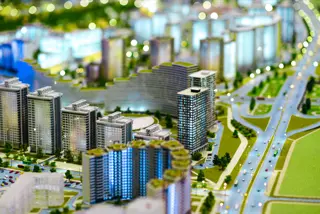Industrial Growth Creates Affordable Housing Demand
 Manufacturing hubs and IT parks near Kanchipuram have surged in recent years, drawing rural migrants seeking employment. These workers need low-cost housing options, creating unprecedented demand for budget accommodations in peripheral zones like Chengalpattu.
Manufacturing hubs and IT parks near Kanchipuram have surged in recent years, drawing rural migrants seeking employment. These workers need low-cost housing options, creating unprecedented demand for budget accommodations in peripheral zones like Chengalpattu.
Targeting Underserved Peripheral Areas
Chengalpattu's strategic location makes it a prime spot for budget housing projects. Proximity to industrial estates and connectivity improvements allow developers to build rental units near workplaces, reducing commute times and housing costs.
Key Affordable Housing Types Emerging
- Dormitory-style complexes offering shared facilities to minimize costs
- Rental units with tiered pricing accommodating different income brackets
- Temporary modular housing for seasonal workers
Government Policy Interventions
NITI Aayog's SAFE Accommodation initiative promotes PPP-mode housing near industrial zones through Viability Gap Funding (VGF). This initiative addresses zoning challenges and provides incentives for private developers:
- Viability Gap Funding (VGF) to offset construction costs
- Rebates on construction permits
- Fast-track approvals in designated industrial zones
The Pradhan Mantri Awas Yojana-Urban (PMAY-U) supports rental housing projects by repurposing existing structures under public-private partnerships. Pilot projects in Hyderabad and Pune demonstrate successful models for adapting urban housing policies to migrant needs.
Market Response and Challenges
Private companies like Aarusha Homes operate low-cost dormitories near Chennai's industrial corridors, showing viable business models for short-term housing. They provide many features like meals, and laundry services, targeting migrant professionals.
However, regulatory hurdles remain:
- Zoning laws restricting residential units near industrial areas
- High land acquisition costs
- Financing gaps for developers
Future Opportunities
The convergence of industrial growth and policy reform creates fertile ground for:
- Community housing models combining residential and skill development facilities
- Public procurements targeting welfare board funds for worker housing upgrades. Developers already recognizing safety, hygiene, and proximity as critical selling points are set to expand capacity as infrastructure improves in peripheral regions like Chengalpattu.